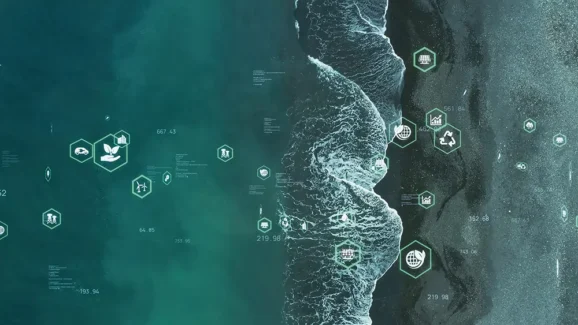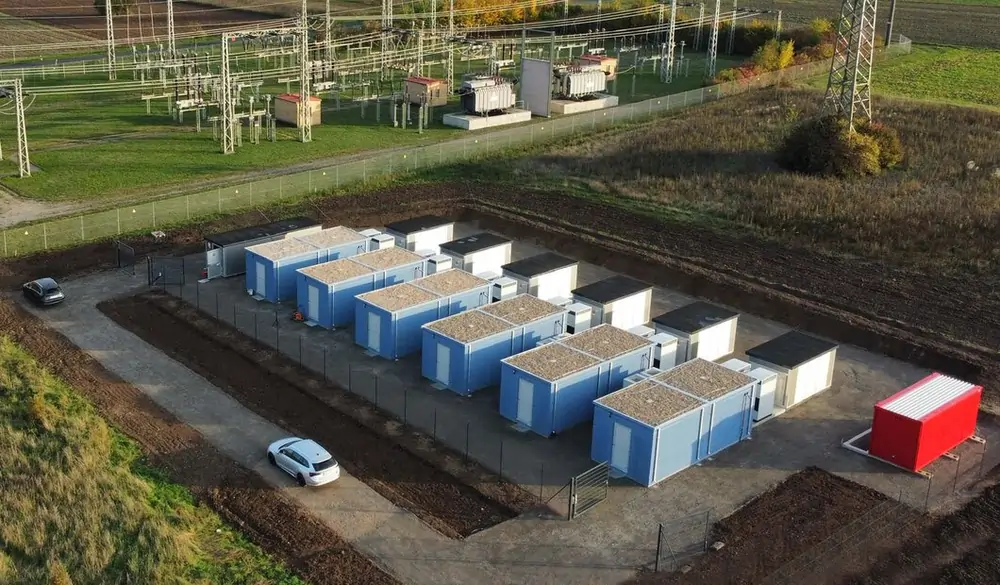Digitally enable your ESG solutions

John E. Kaye
- Published
- ESG, Home, Sustainability

Digital technologies have a transformational role to play as organisations across the board find ways to meet their ESG objectives, says Albert Plugge of Nyenrode Business University
Environmental, social, and governance (ESG) reporting has rapidly become a strategic imperative for companies of all shapes and sizes. Driven by European and UK directives such as the Corporate Sustainability Reporting Directive (CSRD) and the UK Sustainability Disclosure Standards (UK SDS), financial analysts are demanding more ESG information to assess corporate ESG reporting, as a lack of information may result in valuation risks.
According to KPMG’s ‘CEO-Outlook 2023’, 69% of the CEOs surveyed have fully embedded ESG into their business as a means to value creation. Even though CEOs are keenly attuned to new ESG regulations and shifting politics, 68% acknowledge that the current ESG progress is not strong enough to withstand potential scrutiny.
Challenges of collecting ESG data
From a practical point of view, the impact that ESG may have is significant as CSRD obliges companies to conduct a Double Materiality Assessment (DMA). A DMA provides insight into what is material to the company and what is material to society and the planet.
The effects of climate change on our daily lives are becoming clearer every day. According to various reports across the reinsurance sector, the latest wave of storms in 2023 caused insured losses estimated at more than £560m by the Association of British Insurers. Therefore, insurance companies may increase their premium to insure houses, production facilities or even decide to cancel their services, which leads to uninsured assets.
Companies have experienced that collecting ESG data manually is labour-intensive and time-consuming. When collecting and analysing ESG data successfully, companies must transform as data is often fragmented across multiple internal and external stakeholders. Transforming organisations is always risky as senior management and employees need to change existing structures and their way of working. Applying digital technologies, however, may overcome transformation challenges.
I work with KPMG Advisory, where I support companies in their transformation journey of middle and back-office services from a digital perspective. In addition, I hold a full professorship at Nyenrode Business University in the Netherlands. By conducting research initiatives, my goal is to create new insights into how digital technologies may support companies’ ESG transformation journey.
As companies influence society and the planet, their ESG goals may range from reducing energy consumption and travel emissions to protecting biodiversity. So, let’s look at a range of examples in which digital technologies may be helpful to support a company’s ESG transformation ambition.
Data collection and analysis
An opportunity for companies to collect and analyse ESG data is to utilise digital platforms. Various IT providers provide solutions to support ESG reporting goals like carbon dioxide and travel emissions, energy, and waste consumption. These solutions can be managed both in-house by a company’s IT department or outsourced to the market (cloud solutions). Examples include a broad range of industry leaders like IBM, SAP, Oracle, Workiva and specialist suppliers such as Carbon Cloud and Supplyshift, to name a few. These digital platforms offer various features, for example, metrics, calculations, data management and reporting.

Supply chain simulation
To finally report ESG targets, companies have to collect data from internal departments (e.g. Finance and accounting, HR, IT, etc.) and their business partners, like energy suppliers, contractors and accountants. As companies have become dependent on their business partners to share ESG data, it is interesting to find out how all partners can mutually contribute to create insights into their own ESG targets. An example is the reduction of carbon dioxide emissions. By collecting data along the supply chain of a company and simulating scenarios by means of a digital twin, all business partners may achieve valuable insights into which elements contribute to CO2 reductions in the supply chain as a whole. In doing so, all partners may contribute and create solutions that can be implemented.
Automated controls
Another example in which technology may contribute to achieving ESG ambitions is the role of automated controls. Many countries struggle with how to deal with dry and wet areas, specifically when it comes to managing groundwater level. Applications that are based on artificial intelligence or machine leaning may support digital-powered water management solutions and decide when and how much surplus water needs to be sent to water-deprived areas. Thus, digital technologies enable companies to develop and implement automated controls for decision-making, taking environmental factors like weather influences into account.
Storage of greenhouse gases
A real challenge today is how to capture greenhouse gases (GHGs) like carbon dioxide, methane, ozone, nitrous oxide, and develop solutions to store these. Digital technologies like IoT sensors may play a useful role in measuring underground GHGs emissions storage. In fact, digital technologies could enable experts to determine the most optimal temperature for storing emissions and tracking their subsidence impact. Subsidence is the sinkage of ground under buildings, causing them to collapse.
ESG predictions
Although many companies today focus on emission reductions, there is another important challenge: the decline of biodiversity (e.g. quality of meadows and water, reduction of bees). The importance of biodiversity is tremendous as, for example, it influences the strategic planning of municipalities and project developers to build houses in rural areas.
Digital technologies could provide governmental bodies greater insights on future environmental risks arising from biodiversity measures, such as ensuring water sent to dry lands to improve their biodiversity doesn’t damage people’s homes.
Developing predictions and scenarios are expected to provide relevant insights into restoring biodiversity.

How can companies use technology to meet ESG goals?
As a result of the examples outlined above, I address two relevant effects. First, senior management need to strengthen their capabilities to cater for ESG challenges. These capabilities include business and regulation expertise to assess the impact of the environmental, social, and governance challenges on their organisation (scope 1 and 2) and business partners (scope 3).
Moreover, companies must extend their digital capabilities to enable reliable reporting on ESG performance. For instance, the translation of EU directives into taxonomies to support data exchange between internal and external business partners is complex and requires continuous attention. As a result, developing digital capabilities is key.
Considering the role of both internal departments and business partners, the second effect addresses the importance of intensive collaboration between them. Based on recent research, I suggest that companies apply a systemic approach to deal with ESG challenges as the knowledge and experience to design and manage ESG initiatives is fragmented across business partners. The design and management of digital-enabled ESG solutions often requires an explorative approach as these are not mainstream yet.
A major takeaway is that intensive collaboration amongst internal and external business partners demonstrated that strategies can be mutually developed to overcome ESG challenges. As such, applying a systemic approach that includes all partners may decrease operational effects.
“Wicked problems” presented by ESG
To overcome “wicked ESG problems” – which are problems with many interdependent factors and often seem impossible to solve – companies have to collaborate with business partners intensively to develop solutions.
In fact, driven by regulations as well as intrinsic motivations, many industries have to transform to meet their ESG targets. Due to important dependencies with business partners, companies may engage in relational agreements that go beyond a transaction-oriented mindset. By using digital technologies companies and their business partners mutually develop answers to overcome ESG challenges and as such support industry transformations. In doing so, originally fragmented digital technologies will become more integrated, supporting the exchange of ESG data between companies and their business partners.
Integrating technologies enables the degree of transparency of ESG data, which in turn results in a contribution to synergies for all business partners.

About the author
Dr Albert Plugge is Associate Director at KPMG Advisory in The Netherlands and holds a Full Professorship at Nyenrode Business University on ESG Transformations and Digital Innovation.
Sign up to The European Newsletter
RECENT ARTICLES
-
 Jersey builds on regulatory strength to stay globally competitive
Jersey builds on regulatory strength to stay globally competitive -
 Why hybrid energy systems are set to power the continent
Why hybrid energy systems are set to power the continent -
 ees Europe: The rise of large-scale storage systems
ees Europe: The rise of large-scale storage systems -
 From reputational risk to competitive advantage
From reputational risk to competitive advantage -
 Take your business success full circle
Take your business success full circle -
 Designed for life
Designed for life -
 Is your ESMS fit for purpose?
Is your ESMS fit for purpose? -
 Digitally enable your ESG solutions
Digitally enable your ESG solutions -
 Afore SURA - The journey to sustainable investment
Afore SURA - The journey to sustainable investment -
 ESG at IDFC FIRST Bank
ESG at IDFC FIRST Bank -
 Takeaways from eco food study
Takeaways from eco food study -
 It’s all about sustainability
It’s all about sustainability -
 Invest in a Greener Tomorrow with Westbrooke Associates
Invest in a Greener Tomorrow with Westbrooke Associates -
 Q&A with Cifi Asset Management's Ricardo Rico, Head of Funds & Javier Escorriola, Managing Partner
Q&A with Cifi Asset Management's Ricardo Rico, Head of Funds & Javier Escorriola, Managing Partner -
 The present calls for sustainable investments, and CIFI has heard that call
The present calls for sustainable investments, and CIFI has heard that call -
 The power to transform tomorrow
The power to transform tomorrow -
 UK to mismanage quarter of a million tonnes of plastic waste this year
UK to mismanage quarter of a million tonnes of plastic waste this year -
 How can visionary design save the world?
How can visionary design save the world? -
 Interview with Thanawat Trivisvavet, Managing Director of CKPower
Interview with Thanawat Trivisvavet, Managing Director of CKPower -
 Elsewedy Electric - Powering progress
Elsewedy Electric - Powering progress -
 Thailand’s CKPower leads sustainable business model
Thailand’s CKPower leads sustainable business model -
 It’s time to focus on the ‘S’ in ESG
It’s time to focus on the ‘S’ in ESG -
 The seven competencies of ESG leaders
The seven competencies of ESG leaders -
 Why businesses must begin their net zero journey now
Why businesses must begin their net zero journey now -
 Every drop of the ocean is connected - Ocean Bottle
Every drop of the ocean is connected - Ocean Bottle


























